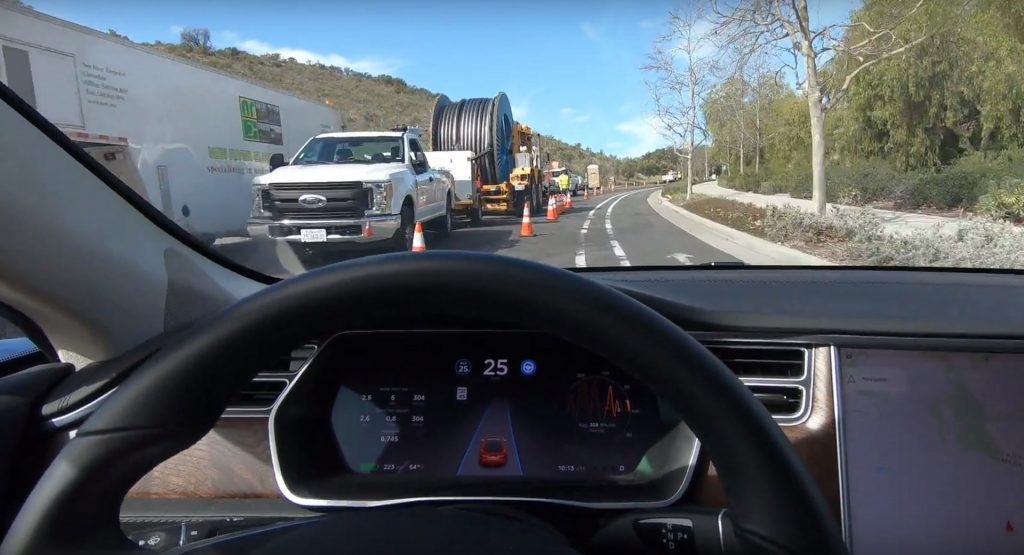In 2016, a man was killed onboard his Tesla while it was operating in Autopilot mode. Last week, a pedestrian was struck and killed by an autonomous Uber prototype.
While these tragic accidents are heart-wrenching, they are unlikely to meaningfully slow or reign in the aggressive development of self-driving cars being pursued by automakers, technology companies, and governments.
In fact, Toyota and Uber are the only companies to have suspended their autonomous testing programmes in the U.S. in the wake of this latest incident meaning there are still thousands of vehicles capable of semi-autonomous driving on the roads. This short video shows that despite these tragedies, and other non-fatal accidents, progress of such systems continues to be made.
Filmed from onboard a Tesla Model S, the video shows the vehicle’s Autopilot system updated to the latest version (v8.1 2018.10.4) expertly detecting and adapting to road construction. If there’s nothing going on out of sight of the camera, like minor steering inputs being made by the driver, the clip captures the moment the Tesla recognizes cones on the road, slows down, and makes its way through the construction site without incident.
Due to the huge fleet of Autopilot-equipped Tesla models on the roads, the electric automaker has a huge advantage over its rivals in gathering testing miles in real-world conditions. The point that Tesla owners are effectively beta-testers for a revolutionary new technology is up for debate, however.
While the technology captured in the video is impressive, we still feel rather uneasy watching it as the driver appears to be filming the scene with a handhold device and doesn’t have their full attention on the road. At one point, the car passes a construction worker just a couple of feet away and the results could have been disastrous if the system became confused at that moment.



